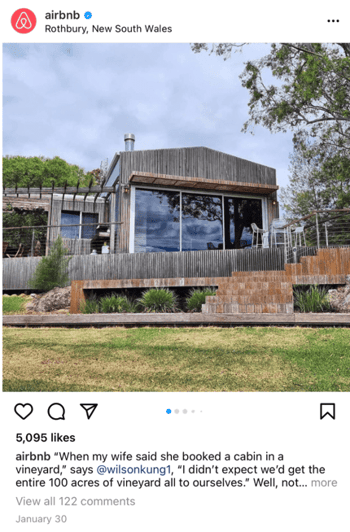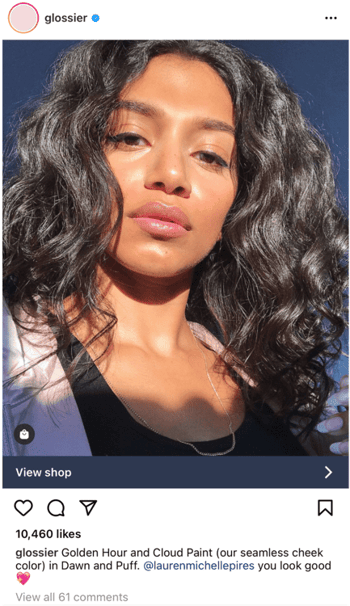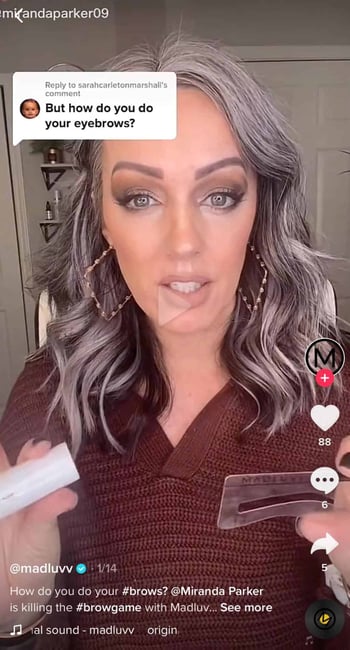
We get it — driving customer demand is an uphill battle for B2C brands right now.
Sure, the rapid growth of ecommerce represents a window of opportunity for up-and-coming companies.
But that doesn’t change the fact that competition is fierce.
Between millions of independent ecommerce sites and Amazon storefronts, the average consumer is spoiled for choice. Couple that with so many marketing channels fighting for your audience’s attention.
The solution? Instead of solely building brand awareness, focus on creating demand.
That’s where your demand generation marketing strategy comes into play.
In this quick guide, we’ll break down how to use demand generation to drive leads and what doing so looks like in action.
What is Demand Generation in B2C?
Demand generation represents marketing tactics that highlight customers’ needs and desires, signaling your product or service as the necessary solution.
In short, it’s the process of getting buy-in from strangers by making them both problem and solution-aware.
Whereas brand awareness is about educating customers about who you are, demand generation is more about proving why people need you.
Because creating a sense of demand around your products doesn’t happen by accident. Doing so happens through not only highlighting why your product is can’t-miss but also creating a sense of urgency around buying it now.
Below are examples of demand generation tactics:
- Content creation such as blogging or how-to videos that educate your audience
- Offering free tools or resources to your customers (think: buyer’s guides, product quizzes)
- Product giveaways
- Press coverage and earned media that highlights why your brand is buzzworthy
- Strategic creator collaborations that get your brand in front of new and relevant audiences
- Social media marketing that emphasizes all of the above
Demand Generation vs Lead Generation: What’s the Difference?
Let’s make a quick distinction between demand generation and lead generation.
These terms are often used interchangeably. That said, they’re not the same at all.
Lead generation focuses on converting customers through strategies such as gated content and ads. These tactics focus on retrieving information in order to turn a stranger into a lead. On the flip side, demand generation is primarily about education and awareness, providing prospects a sort of “lightbulb moment” versus direct conversions. You often need both to score sales..
Why Demand Generation Matters So Much for B2C Brands
Here are some important demand generation statistics and reports that highlight exactly why the tactics above matter.
Growing Competition as B2C Ecommerce Continues to Boom
No surprises here — ecommerce shops are popping up left and right. According to recent data from Finbold, Amazon attracts roughly ~3,700 new independent sellers daily.
Meanwhile, brick-and-mortar retailers are bouncing back as well. In fact, a massive 81% of Gen Z consumers actually prefer to shop for new products in-store.
The takeaway? Whether online on in-person, B2C brands face heavy competition. Through demand generation, you can cement why what makes your products different and attract customers in the process.
Consumers are Tired of Irrelevant, Unfocused Marketing
With so many marketing channels out there, you need to choose the right ones for the sake of your time and budget.
The problem? A staggering 58% of consumers feel that marketing directed at them is irrelevant.
Yikes.
This speaks to a huge upside of demand generation, though. You actually have to dig deep and figure out your audience’s problems and pain points. This ensures that your marketing never feels untargeted or one-size-fits-all.
Customers are Overwhelmed with So Many Products to Choose From
In the era of “choice overload,” customer fatigue is a serious problem.
Piggybacking on the point above, people need to be nudged in the right direction by brands that can actually help them. In turn, brands need to be proactive about attracting and nurturing relevant leads. That’s exactly what demand generation does.
5 B2C Demand Generation Marketing Examples and Ideas to Try
So, what does demand gen look like in action? How do brands actually do it?
Good question! Below is a breakdown of five actionable demand generation ideas that are fair game for B2C companies regardless of your industry.
1. Develop a Word-of-Mouth Strategy That Puts Customers First
Satisfied customers represent the most powerful marketing assets you could ever ask for.
Here are some effective ways to incorporate consumers into your sales funnel to drive demand:
- Encourage customers to share content, promotions and purchases with others (check out these user-generated content examples for inspo)
- Republishing shout-outs, positive reviews and customer success stories
- Monitoring your mentions and proactively responding to people who talk about you via social to keep the conversation going
But how do you use social proof in the customer journey to create demand?
Check out how Airbnb showcases real rentals you can book on Instagram, captioned with glowing customer reviews. This photo and copy drives bookings and likewise make followers ponder their next rental.

Photo Credit: @airbnb
Glossier keeps customers at the core of their social media presence, showing off products and illustrating how well they work.

Photo Credit: @glossier
Again, people are central to B2C demand generation. Their wants, needs and desires. This speaks to why real-life customers and creators should be cornerstones of your digital marketing.
2. Create Problem-Solving Content That Speaks Directly to Your Audience
People want to find the easiest and most efficient solutions to their problems.
Makes sense, right?
By positioning your brand as the ultimate, low-stress solution, you can catch your audience’s attention faster. Doing so means educating your customers and showcasing how you can solve their specific challenges.
Some of the most popular ways to do this include:
- Social media posts and videos (think: tutorials, how-tos, tips)
- Sharing stats, studies and infographics
- Writing blog posts and other long-form educational content
Don’t underestimate the power of how-to content. For example, makeup artists on TikTok like Rose Siard have amassed huge followings through product reviews and tutorials.

Photo Credit: @roseandben
Such creators are awesome as they create both demand and exposure for brands. This is exactly what happened when Rose featured Mad Luvv brows in one of her videos, in 2021 causing a full-blown TikTok sensation that earned media placements in Allure (among other outlets). In turn, Mad Luvv continues to rely on creators and tutorial-style videos as part of their content strategy.

Photo Credit: @madluvv
Such videos work not only because they showcase what products can do but also how to use them. This makes it so much easier for prospective customers to understand why they need your product and imagine it in their hands.
3. Roll Out Retargeting Ads that Only Serve to Qualified Leads
Spoiler alert: not all ads have to be spammy!
Although social ads are usually associated with lead gen, they can also work with your digital demand generation strategy.
Specifically, retargeting ads give you a second chance to win over people who’ve already shown interest in what you’re selling.
Unlike untargeted ads that consumers ignore, thoughtful retargeting ads can be optimized to only serve people who’ve taken actions such as visiting your website or adding a product to their shopping cart.
For example, promo code retargeting ads can be used to get potential buyers to reconsider a purchase they might have abandoned. Check out how Yellowpop retargets previous website visitors, incentivizing them with free shipping to complete their order:

This is the “demand” piece of demand gen on display. The ad above both encourages shoppers to act quickly while also providing reassurance. This is done through free shipping and the promise of easy installation.
Taking this approach helps drive purchases faster without being aggressive or “salesy” in your ads. See how that works?
4. Reduce Friction with Exclusive Deals and Offers for First-time Buyers
First impressions matter in B2C.
And one of the best ways to get off on the right foot is by offering a great deal.
Food for thought: 89% of millennial shoppers (and 78% of Gen Z) say they’re willing to give a new brand a try if they’re presented with a discount or coupon.
Discounts and demand generation go hand in hand, reducing friction and eliminating potential customer objections based on price. This can be done through:
Given that over 145 million digital coupons were redeemed in 2021, discounts are alive and well. Although they might not be groundbreaking in terms of strategy, they’re still as powerful as ever.
5. Empower Creators to Post Demand-Generating Content
Creators are helping B2C brands in a big way on TikTok and Instagram, educating their own audiences about products while providing brands with much-needed social proof.
For example, Hunny Nutrition worked with Statusphere to partner with social media creators who could engage audiences with product photos and other UGC. By partnering with the right creators, the brand was able to create eye-popping social content that resonated with their target audience (see the snapshot below).

Photo Credit: @statusphere
If you’re been struggling with social growth yourself, consider that creators already know the best practices of any given platform. Collaborating with creators through strategic partnerships is a prime way to raise awareness and create an ongoing library of UGC to use throughout your demand gen efforts.
 Which Demand Generation Strategies Are You Using?
Which Demand Generation Strategies Are You Using?
Actively generating demand is key to standing out in a crowded B2C marketplace.
Through engagement, education and creating valuable content for your target audience, you can quickly reach teach them how you can meet their needs.
And by collaborating with creators who understand and resemble your own ideal customers, you have a direct line to more opportunities to drive sales and build awareness.
Utilizing creators as part of your demand gen marketing efforts is a prime way to build social proof and encourage more conversions long-term.
At Statusphere, we specialize in connecting brands with creators in their niche and managing their creator campaigns from start to finish. Get in touch with our consumer-to-consumer marketing experts today to chat about how we can set your brand up for success by partnering with the right creators.
